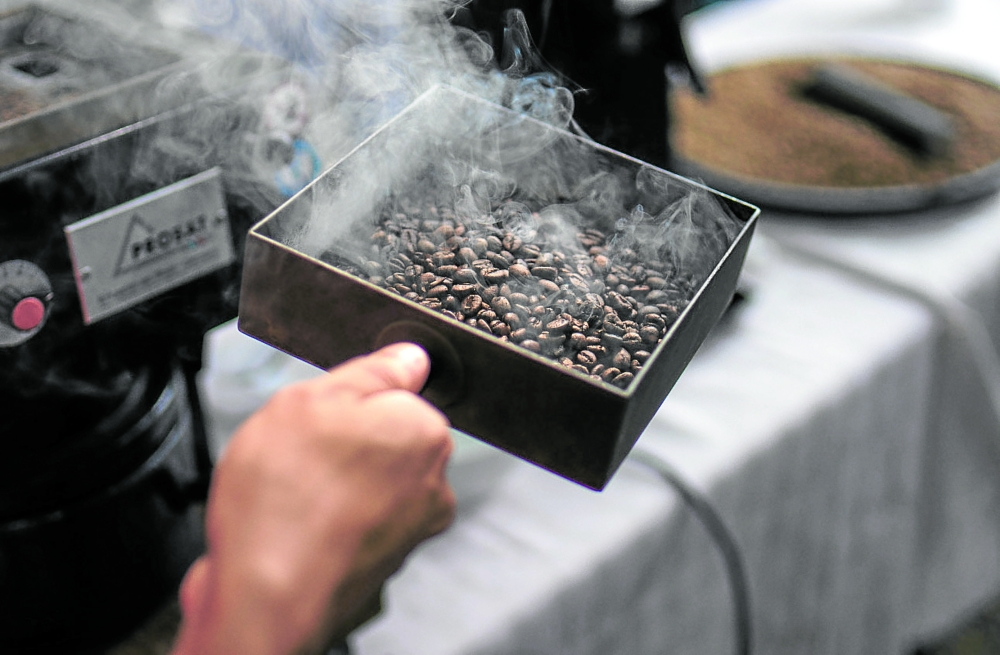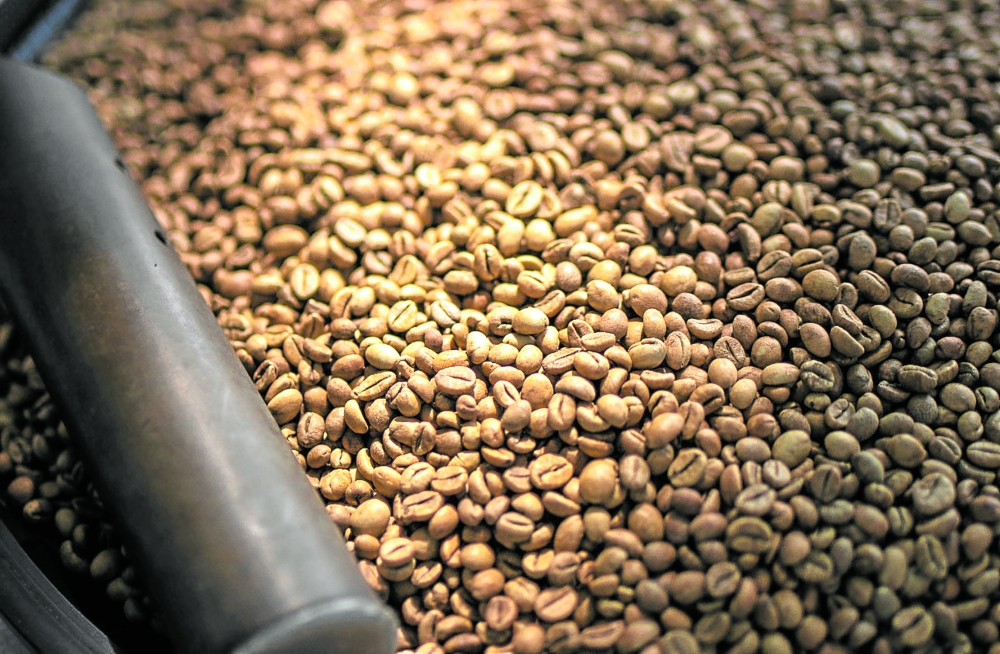Coffee bean pricing perks up prospects for PH farmers

Consumers may soon pay more for their daily cup of joe as supply woes brew in the global market—but this could be a blessing in disguise for Filipino coffee farmers who now have greater opportunity to boost their income.
Global coffee prices may further rise this year if key growing regions experience further significant supply reductions, a report by the Food and Agriculture Organization of the United Nations (FAO) says.
It cites several factors behind the recent price spikes: limited supplies from Vietnam and Indonesia, adverse weather conditions in Brazil and higher shipping costs.
Coffee, one of the most widely consumed beverages worldwide, is commercially produced in more than 50 countries. The world consumes 3 billion cups a day, says the International Trade Centre, a joint agency of the UN and the World Trade Organization.
Brazil, Vietnam, Colombia and Indonesia are the major coffee producers. FAO estimates that Brazil and Vietnam account for almost 50 percent of global coffee production valued at $20 billion annually.
Here at home, the local unit of the Swiss-based global food giant known for its Nescafe coffee brand had to temper upward price adjustments in the first quarter to cushion Filipino consumers from rising coffee prices.
“In the event of significant and continuing global upward movements in coffee prices, we adjust retail prices as a last resort. We try our best to absorb increased costs if possible and look for greater efficiencies to avoid price increases,” Nestlé Philippines says in an email to the Inquirer.
In light of looming supply constraints, the Department of Agriculture (DA) warns rising global prices could make importing coffee into the Philippines more challenging. After all, the country relies on importation to cover 90 percent of its soluble coffee consumption, commonly known as instant coffee.
Mass consumption
Cheryl Marie Natividad-Caballero, agriculture undersecretary for high- value crops, says the extent of the impact depends on how much prices increase and whether they stabilize at a certain level.
“If prices rise significantly, overall consumption may decrease as lower-income households prioritize basic necessities like food, shelter, health care and education,” Natividad-Caballero says in an email interview with the Inquirer.
In this country, low- and middle-income households are the biggest coffee consumers, who mostly purchase 3-in-1 coffee sachets due to their affordability and convenience, the DA says.
“Despite potential declines in mass consumption, the specialty coffee segment and coffee shop aficionados will likely continue consuming their preferred brews even at higher prices,” she adds.

Import reliance
However, the Philippine Coffee Board Inc. (PCBI), a private sector-led group established to promote the Philippine coffee industry through various initiatives, says the country will rely on importation even more to meet the increasing demand for coffee.
“Coffee imports will not decline as we still consume so much more than we produce,” says Pacita Juan, PCBI president and cochair. “More Asean (Association of Southeast Asian Nations) imports will be made as Indonesia and Vietnam will be closer to us and will be better for logistics.”
Citing government data, the DA says the Philippines produces just about 38.1 percent of its total coffee beans supply requirement.
On the other hand, PCBI estimates local consumption at 200,000 metric tons (MT), much larger than the domestic output of just between 20,000 MT and 30,000 MT.
Although the cost of instant coffee remains stable based on market monitoring, the Department of Trade and Industry (DTI) says it is closely working with the DA to ensure fair pricing and combat profiteering through intensified market monitoring and enforcement initiatives.
“Nevertheless, both agencies will continue to closely monitor coffee price trends to protect consumers and take decisive action against profiteering practices,” Trade Secretary Ma. Cristina Roque says in a statement sent to the Inquirer.
“These efforts include rigorous oversight of compliance with the Suggested Retail Price (SRP) Bulletin to prevent unjustified price manipulation, thereby safeguarding consumer welfare,” she adds.
Price volatility
For its part, Nestlé Philippines says it is absorbing higher costs and boosting operational efficiencies whenever possible to manage price spikes.
“Moving forward, it remains to be seen if and how any price adjustments, depending on their amounts, will impact on local coffee consumption,” the company says, adding that coffee consumption increased last year.
The FAO explains price fluctuations are a common feature of coffee markets, with historical trends showing that recurring imbalances between supply and demand drive such patterns.
“These imbalances are further exacerbated by the inherent economic and physical characteristics of the coffee market,” it says. “The demand for coffee is inelastic, meaning consumption changes only marginally in response to a change in prices.”
To mitigate the effects of price fluctuations, the FAO recommends improving market transparency. It explains that access to reliable and real-time information will aid all industry players in making sound decisions, planning production activities effectively and reducing the associated risks with price shocks and market volatility.
According to FAO, the inclement weather affecting key producing nations fueled a 38.8-percent surge in coffee prices last year.
Prices of arabica, a higher-value coffee primarily used in the roast and ground coffee market, climbed 58 percent in December last year. Meanwhile, robusta, mainly used in instant coffee, registered a 70-percent surge.
“This surge in coffee prices led to a narrowing of the price differential between the two varieties for the first time since the mid-1990s,” the FAO says.
Incentivizing farmers
Soaring coffee prices might mean stretching consumers’ budgets for that caffeine fix, but for many Philippine coffee farmers, this could mean higher income for their produce.
The DA says coffee farmers are now commanding higher farm-gate prices for locally grown coffee due to prevailing global market trends and the growing recognition of Philippine specialty arabicas and fine robustas in international markets.
“As a result, coffee farming has regained its profitability, encouraging both aging farmers to remain in the industry and attracting younger generations to enter the sector,” says Natividad-Caballero.
According to the Philippine Statistics Authority, farm-gate price, or the price received by farmers for selling their produce straight from the farm, stood at P211.28 per kilogram in 2024 for arabica, down by 7.7 percent from P228.76 per kg a year prior.
The farm-gate price of robusta rose by 47.4 percent to P133.15 per kg from P90.31 per kg.
Beyond planting more trees
The DA says it has been increasing support programs to advance the local coffee industry. It implements several interventions through the High-Value Crops Development Program, including the Competitiveness Enhancement Measure Fund and the Philippine Rural Development Program, to expand coffee cultivation and develop farmers.
It also partners with government agencies, private organizations and international organizations to promote the development of this sector. Juan says bolstering domestic output goes beyond planting more trees. This also requires harnessing the power of technology to enhance the productivity and income of coffee farmers.
“We don’t need just seedlings, but we need research and development for more disease-resistant and climate-resilient coffee varieties. With climate change, we need more experiments and research on new coffee varieties to augment our production,” Juan says.
The PCBI conducts training for coffee farm establishment, nursery establishment and upkeep of existing farms to help the industry. Juan says GForest, a sustainability initiative within the GCash mobile application, has commissioned their group to plant more than 250,000 new coffee trees from Benguet to Sulu and Basilan.
Moreover, Juan says exchange visits to other research facilities in Southeast Asia will be organized through the Asean Coffee Federation, a group of coffee industry players across the region, noting that some countries are far advanced in developing climate-resilient coffee varieties.





















